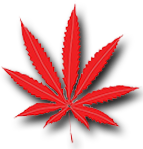Medicinal plant, Bryophyllum pinnatum, standardization, gout.
Abstract
Around the globe, Bryophyllum pinnatum is widely used to cure various aliments in traditional medicine. It is enriched with a diverse range of chemical ingredients which are responsible for its substantial therapeutics effects such as anti-pyretic, analgesic, anti-inflammatory, anti-oxidant, tocolysis, hepatoprotective, wound healing, nephroprotective, urolithic, anti-microbial, anti-tumour, and anti-diabetic. The study aims at proximate analysis and biological studies of root extracts of Bryophyllum pinnatum, with previously little work done on roots. Standard methods were applied for the phytochemical analysis of powder and extracts. In vitro anti-inflammatory effect was evaluated by protein denaturation method. Also, assay for xanthine oxidase inhibition was done to confirm anti-gout potential. Sequentail extraction procedure was used to prepare the extracts. Findings of phytochemical analysis have exposed the presence of primary metabolites (%w/w); carbohydrates (48.54+0.6)> lipids (1.32) > proteins (21.06+0.6). Secondary metabolites (mg/g) maximum found in methanol extract (flavonoids 95.81+0.026, glycosaponins 39.9+0.103) and aqueous extract (polyphenols 114.93+0.0234). UV Visible and FTIR scanning results have demonstrated the presence of various important functional groups. In vitro anti-inflammatory studies have revealed that aqueous extract (87.46%) was found to be most active and IC50 of aqueous extract (IC50 570.24ug/ml) was found to be more effective than reference drug, diclofenac sodium. In vitro xanthine oxidase inhibition activity was also performed and methanol extract (88.24%) was found to be most effective. Outcomes of this study has confirmed rationale behind use of plant under investigation for treatment of inflammation and gout. However, more studies are required to ensure its safety and efficacy as prospective drug candidate.
